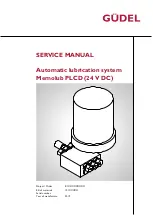
27
EAR99
Technology
Subject
to
Restrictions
Contained
on
the
Cover
Page.
Chapter 5: Hardware Configuration
This chapter provides information about the installation of hardware that may be
installed on a Lansis camera.
A Lansis camera must be properly mounted to a spectrograph in order to focus the
optics. Additional precautions must also be taken to prevent overexposure of the
camera.
The distance to the focal plane from the front of the mechanical assembly depends on
the specific configuration.
5.1
Spectrograph Adapters
Teledyne Princeton Instruments offers a number of adapters for mounting a Lansis
camera onto a spectrograph, including:
•
Teledyne Acton Research Series Spectrographs, and
•
IsoPlane Family of Spectrographs.
NOTE:
Other adapters may be available. Contact Teledyne
Princeton Instruments for specific information. Refer to
on page 100, for complete contact
information.
5.2
Overexposure Protection
Cameras that are exposed to room light or other strong light sources can become
saturated. This most often occurs when operating without a shutter or with the
shutter locked open. When LANSIS is mounted to a spectrograph with high incoming
light, close the entrance slit of the spectrograph to a normal spectroscopy setting to
reduce the incident light.
NOTE:
If
the
CCD
is
cooled
to
low
temperatures
(below
‐
50°C),
exposure
to
ambient
light
can
over
‐
saturate
it,
causing
charge
to
be
stored
in
the
bulk
silicon.
This
charge
is
released
over
time,
and
manifests
as
increased
dark
current.
If
the
camera
shows
elevated
dark
charge,
to
restore
dark
charge
to
its
original
level
it
may
be
necessary
to
bring
the
camera
back
to
room
temperature,
then
cool
it
down
again
in
the
dark.
At
low
temperatures,
it
takes
a
long
time
for
the
CCD
to
return
to
its
normal
dark
current
level.
The
CCD
is
not
permanently
harmed
by
over
‐
saturation
















































